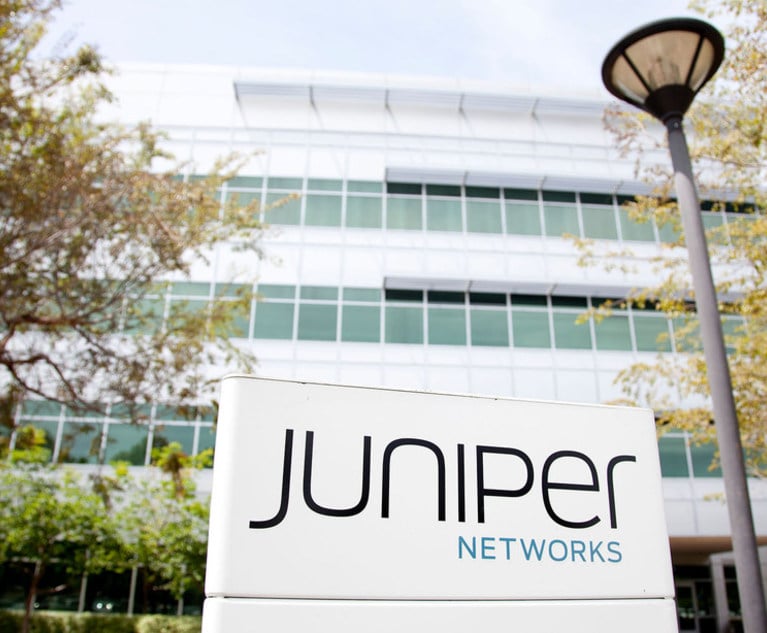The 80 Percent Solution
Being perfectionists generally serves lawyers well. With a low margin for error, most legal work benefits from a perfectionist bent. Perfection, however, has a dark side, especially where the world operates on a continuum (better to worse) rather than a binary divide (right/wrong). Voltaire warned that the perfect is the...
December 31, 2015 at 07:00 PM
4 minute read
Being perfectionists generally serves lawyers well. With a low margin for error, most legal work benefits from a perfectionist bent. Perfection, however, has a dark side, especially where the world operates on a continuum (better to worse) rather than a binary divide (right/wrong). Voltaire warned that “the perfect is the enemy of the good.” Departmental improvement initiatives already have enough natural enemies. And perfect improvement initiatives are not just expensive, they are illusory.
Go for good. While it runs contrary to our intuitions, you can often make greater gains by taking the initial, obvious, and easy steps that get a process from 80 percent inefficient to 50 percent inefficient than you can by taking the advanced, ambiguous, and arduous steps that get the process from 50 percent inefficient to 0 percent inefficient—i.e., perfect.
Take an operation that currently requires an hour but the right combination of technology, process redesign, and user training could reduce to 10 minutes. That is, 83 percent of time spent (50 of the 60 minutes) is waste. Your plan for total waste elimination, however, encounters budgetary constraints on the technology, holdouts who won't let you redesign the entire process, and some team members who won't attend training. Because you could only make incremental progress on the people, process, and technology, instead of the optimal 10 minutes, you only reduce the operation to 20 minutes. As a result, 10 of the 20 minutes (50 percent) is still waste. But, in improving from 83 percent to 50 percent inefficiency, you shaved off 40 minutes of waste. The extra effort required to get you to zero could only save an additional 10 minutes—i.e., a quarter of what you already saved.
Good enough has profound implications for what, when, and how we tackle improvement initiatives. The advice in our last column was to just get started. Perfection paralysis not only impedes getting started, it can also affect how we approach projects once begun. We are impelled to over-engineer. But our quest for comprehensiveness runs smack into the law of diminishing returns.
Document automation is a real-world example. Document automation is the systematization of what is already ready a cut-and-paste approach to document generation. Lawyers start with a previous version of a similar document and then fill in the blanks. It is sensible. But the mistakes, idiosyncrasies, and aberrations of previous iterations can get unwittingly carried forward.
Rationalizing the approach with the right design and technology, the business people can be provided dynamic questionnaires that will allow them to self-generate documents from the best-available, lawyer-curated templates. It's a great plan. But, like most plans, it is unlikely to survive first contact with the enemy. Business people have a hard time staying within the lines. And their counterparties often want to change it.
Getting to a place where the business people are self-generating every contract is usually unrealistic. The number of contingencies that would need to be programmed into the automation software are cost, time, and talent prohibitive (no one can predict everything).
But you don't need 100 percent coverage. You would have made amazing gains if 50 percent of your contracts are generated using document automation, and 50 percent of those get executed without lawyer involvement. The thing is, you already have a system that accounts for the edge cases. Your business people and lawyers already collaborate with each other and counterparties to craft complex, bespoke documents. That does not go away. Rather, the point is to reduce the amount of finite resources that are dedicated to easy cases, or the easy portion of the hard cases. Where the business people can generate the documents themselves (e.g., basic NDA), they should. The existing infrastructure does not disappear. But many of its key resources (experienced lawyers) get redirected to higher and better use.
In the example above, there is no need to start with all your contracts. You can, and should, start with one contract for one business unit. Learn from it; build on it. There will always be more to do. Perfect is a distraction from the real goal: better than yesterday.
This content has been archived. It is available through our partners, LexisNexis® and Bloomberg Law.
To view this content, please continue to their sites.
Not a Lexis Subscriber?
Subscribe Now
Not a Bloomberg Law Subscriber?
Subscribe Now
NOT FOR REPRINT
© 2025 ALM Global, LLC, All Rights Reserved. Request academic re-use from www.copyright.com. All other uses, submit a request to [email protected]. For more information visit Asset & Logo Licensing.
You Might Like
View All
LSU General Counsel Quits Amid Fracas Over First Amendment Rights of Law Professor
7 minute read
Exits Leave American Airlines, SiriusXM, Spotify Searching for New Legal Chiefs
2 minute read
'A Warning Shot to Board Rooms': DOJ Decision to Fight $14B Tech Merger May Be Bad Omen for Industry
Trending Stories
- 1Veritext Legal Solutions Announces the Past Acquisitions of Three Alternative Dispute Resolution Firms
- 2Sarno da Costa D’Aniello Maceri LLC Announces Addition of New Office in Eatontown, NJ, and Named Partner
- 3LSU General Counsel Quits Amid Fracas Over First Amendment Rights of Law Professor
- 4An Eye on ‘De-Risking’: Chewing on Hot Topics in Litigation Funding With Jeffery Lula of GLS Capital
- 5Arguing Class Actions: With Friends Like These...
Who Got The Work
J. Brugh Lower of Gibbons has entered an appearance for industrial equipment supplier Devco Corporation in a pending trademark infringement lawsuit. The suit, accusing the defendant of selling knock-off Graco products, was filed Dec. 18 in New Jersey District Court by Rivkin Radler on behalf of Graco Inc. and Graco Minnesota. The case, assigned to U.S. District Judge Zahid N. Quraishi, is 3:24-cv-11294, Graco Inc. et al v. Devco Corporation.
Who Got The Work
Rebecca Maller-Stein and Kent A. Yalowitz of Arnold & Porter Kaye Scholer have entered their appearances for Hanaco Venture Capital and its executives, Lior Prosor and David Frankel, in a pending securities lawsuit. The action, filed on Dec. 24 in New York Southern District Court by Zell, Aron & Co. on behalf of Goldeneye Advisors, accuses the defendants of negligently and fraudulently managing the plaintiff's $1 million investment. The case, assigned to U.S. District Judge Vernon S. Broderick, is 1:24-cv-09918, Goldeneye Advisors, LLC v. Hanaco Venture Capital, Ltd. et al.
Who Got The Work
Attorneys from A&O Shearman has stepped in as defense counsel for Toronto-Dominion Bank and other defendants in a pending securities class action. The suit, filed Dec. 11 in New York Southern District Court by Bleichmar Fonti & Auld, accuses the defendants of concealing the bank's 'pervasive' deficiencies in regards to its compliance with the Bank Secrecy Act and the quality of its anti-money laundering controls. The case, assigned to U.S. District Judge Arun Subramanian, is 1:24-cv-09445, Gonzalez v. The Toronto-Dominion Bank et al.
Who Got The Work
Crown Castle International, a Pennsylvania company providing shared communications infrastructure, has turned to Luke D. Wolf of Gordon Rees Scully Mansukhani to fend off a pending breach-of-contract lawsuit. The court action, filed Nov. 25 in Michigan Eastern District Court by Hooper Hathaway PC on behalf of The Town Residences LLC, accuses Crown Castle of failing to transfer approximately $30,000 in utility payments from T-Mobile in breach of a roof-top lease and assignment agreement. The case, assigned to U.S. District Judge Susan K. Declercq, is 2:24-cv-13131, The Town Residences LLC v. T-Mobile US, Inc. et al.
Who Got The Work
Wilfred P. Coronato and Daniel M. Schwartz of McCarter & English have stepped in as defense counsel to Electrolux Home Products Inc. in a pending product liability lawsuit. The court action, filed Nov. 26 in New York Eastern District Court by Poulos Lopiccolo PC and Nagel Rice LLP on behalf of David Stern, alleges that the defendant's refrigerators’ drawers and shelving repeatedly break and fall apart within months after purchase. The case, assigned to U.S. District Judge Joan M. Azrack, is 2:24-cv-08204, Stern v. Electrolux Home Products, Inc.
Featured Firms
Law Offices of Gary Martin Hays & Associates, P.C.
(470) 294-1674
Law Offices of Mark E. Salomone
(857) 444-6468
Smith & Hassler
(713) 739-1250







